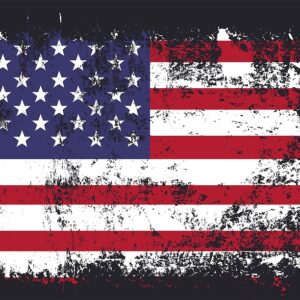For an alternate viewpoint, see “Point: Any Day Is Flag Day.”
The American flag, a symbol of national pride, has a rich and significant history. It has long stood for freedom, democracy and the pursuit of a more perfect union, embodying the collective belief in the nation’s ideals.
However, as American society has increasingly divided into distinct tribes with conflicting identities, the consensus on what ideals the flag represents has significantly eroded.
The flag has become a contentious symbol, embodying divergent political views and sparking debates about its meaning. Its display is often interpreted as an alignment with specific political ideologies, frequently associated with conservative values. In more liberal areas, you might see the pride flag or Black Lives Matter flag alongside the American flag, though they often fly independently. Conversely, conservative circles may pair the American flag with the Gadsden flag, Trump flags, Blue Lives Matter flags, and even Confederate flags.
As a stand-alone symbol, the American flag has the potential to be inclusive, representing a diverse population united under a broad concept of freedom.
It can also be exclusive, symbolizing nationalism and creating an “us” versus “them” dichotomy.
For many, the flag honors the sacrifices of those who fought for liberty and justice. However, its association with military interventions can alienate those who oppose such policies.
By definition, the flag symbolizes nationalism. The current Republican Party’s advocacy for Christian Nationalism further entrenches the flag’s association with one political faction. This perception of nationalism as exclusionary can alienate those who think differently than those claiming ownership of the flag as a symbol of their specific ideology.
Throughout American history, the flag has been critical in social and political movements. During the civil rights movement, activists wielded it to symbolize their fight for equality and justice. More recently, it has been a prominent fixture at protests and rallies, symbolizing unity with or dissent from the faction in power at the time, depending on the cause.
Despite our varied beliefs, many Americans feel a sense of ownership for the flag, interpreting its meaning through their perspectives. Yet, with the cohesion derived from a shared national identity weakened, the challenge now is to consider how we might collectively reclaim the flag as a unifying symbol that transcends political divides, reflecting the diversity that characterizes contemporary America.
We must engage in open, respectful dialogues to reframe the flag’s meaning. By actively listening to diverse perspectives, we can heal divisions and reframe the flag as a symbol of inclusivity and shared values. This process involves acknowledging its complex history and varied interpretations while reaffirming our commitment to core principles that unite us as a nation.
It is difficult for two people with divergent views on policy, ideology and culture to discuss what a shared American future might look like. It is even more challenging to do without acknowledging why that shared future looks different to each of them. But a difficult conversation is the only thing that can bring us into the future, honoring the true spirit of the flag and its ideals.
Embracing this inclusive vision of the flag can help bridge divides and foster a sense of belonging for all Americans. The flag can once again become a symbol that reflects our collective commitment to the freedoms and opportunities it represents, inspiring us to work toward a common goal of unity with the shared values of the continued pursuit of a more perfect union. E pluribus unum — “Out of many, one.”





